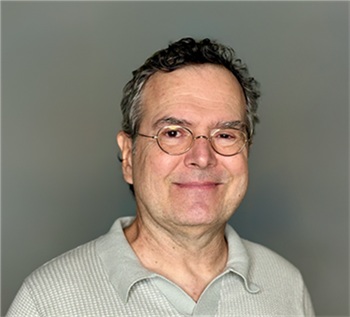
FACULTY
Edward Wojcik, PhD
Associate Professor
Course Director, Medical Biochemistry
Biochemistry & Molecular Biology
- ewojci@lsuhsc.edu
- Medicine
Office:
LSUHSC School of Medicine
533 Bolivar St
Room 320
New Orleans, LA 70112
Phone: (504) 568-2058
Lab: (504) 568-5572
Education
B.S., University of Michigan, Ann Arbor, 1984
Ph.D., University of Michigan, Ann Arbor, 1994
POSTDOCTORAL STUDY:
Dept. of Genetics, Cell Biology and Development, Univ. of Minnesota with Prof. Thomas
S. Hays, 1997– 2000.
Dept. of Anatomy and Physiology, Univ. of Dundee, United Kingdom with Prof. David
M. Glover, 1994 – 1996.
ACADEMIC, PROFESSIONAL, AND RESEARCH APPOINTMENTS:
2012 - present Associate Professor, LSU Health Sciences Center, New Orleans, LA
2005 - 2012 Assistant Professor, LSU HEALTH SCIENCES CENTER, New Orleans, LA
2005 - 2006 Visiting Scholar, Harvard Medical School, Cambridge, MA
2002 - 2005 Visiting Assistant Professor, VIRGINIA POLYTECHNIC INST AND ST UNIV,
Blacksburg, VA
1997 - 2000 Research Associate, UNIVERSITY OF MINNESOTA, Minneapolis, MN
1994 - 1996 Research Associate, UNIVERSITY OF DUNDEE, Dundee
Selected Publications
Kinesin-5: cross-bridging mechanism to targeted clinical therapy.
Wojcik E, Buckley RS, Richard J, Liu L, Huckaba TM, Kim S. Kinesin-5: cross-bridging
mechanism to targeted clinical therapy. Gene [Internet]. 2013 Dec 1;531(2):133–49.
Retrieved from: http://eutils.ncbi.nlm.nih.gov/entrez/eutils/elink.fcgi?dbfrom=pubmed&id=23954229&retmode=ref&cmd=prlinks. PMCID: PMC3801170
Loop 5-directed compounds inhibit chimeric kinesin-5 motors: implications for conserved
allosteric mechanisms.
Liu L, Parameswaran S, Liu J, Kim S, Wojcik E. Loop 5-directed compounds inhibit chimeric
kinesin-5 motors: implications for conserved allosteric mechanisms. Journal of Biological
Chemistry [Internet]. 2011 Feb 25;286(8):6201–10. Retrieved from: http://eutils.ncbi.nlm.nih.gov/entrez/eutils/elink.fcgi?dbfrom=pubmed&id=21127071&retmode=ref&cmd=prlinks. PMCID: PMC3057856
ATP hydrolysis in Eg5 kinesin involves a catalytic two-water mechanism.
Parke CL, Wojcik E, Kim S, Worthylake DK. ATP hydrolysis in Eg5 kinesin involves a
catalytic two-water mechanism. Journal of Biological Chemistry [Internet]. 2010 Feb
19;285(8):5859–67. Retrieved from: http://eutils.ncbi.nlm.nih.gov/entrez/eutils/elink.fcgi?dbfrom=pubmed&id=20018897&retmode=ref&cmd=prlinks. PMCID: PMC2820811
Research Interests
Under the hood of nanomotor proteins:My lab studies how these molecular machines work. The kinesin family of motor proteins are essential for the life of all eukaryotic cells; anything that moves inside a cell, is moved by a motor protein along a cytoskeletal highway network. In particular, the Kinesin-5 family is required for mitosis in all dividing cells and also plays a special role in (nondividing) neurons, particularly dendrites. Unlike bipedal walker, Kinesin-1, Kinesin-5 forms a homotetramer that can crosslink, bundle, and slide microtubules to build higher order cellular machinery, such as the mitotic spindle.
 GIF based on a crystal structure (3HQD) we solved in-house.
GIF based on a crystal structure (3HQD) we solved in-house.
The kinesin-5 motor domain is a highly allosteric system of converting free energy of ATP hydrolysis to mechanical work (illustrated by this GIF); how does this system work? Small next-gen anti-cancer molecules that have been designed to inhibit Kinesin-5, and thereby block cell division, are used in my lab as probes to help understand many different aspects of how these enzymes work. Many of these inhibitors are allosteric, and we would like to know how they bind and impact the distal active site to halt motility. Second, we would like to understand how these compounds can elicit very different outcomes with Kinesin-5 despite binding to the same allosteric binding site. Third, we seek to clarify how Kinesin-5 is designed to cooperate with other kinesin motors which then assemble large-scale molecular structures such as the mitotic spindle and dendritic spines and connections.


